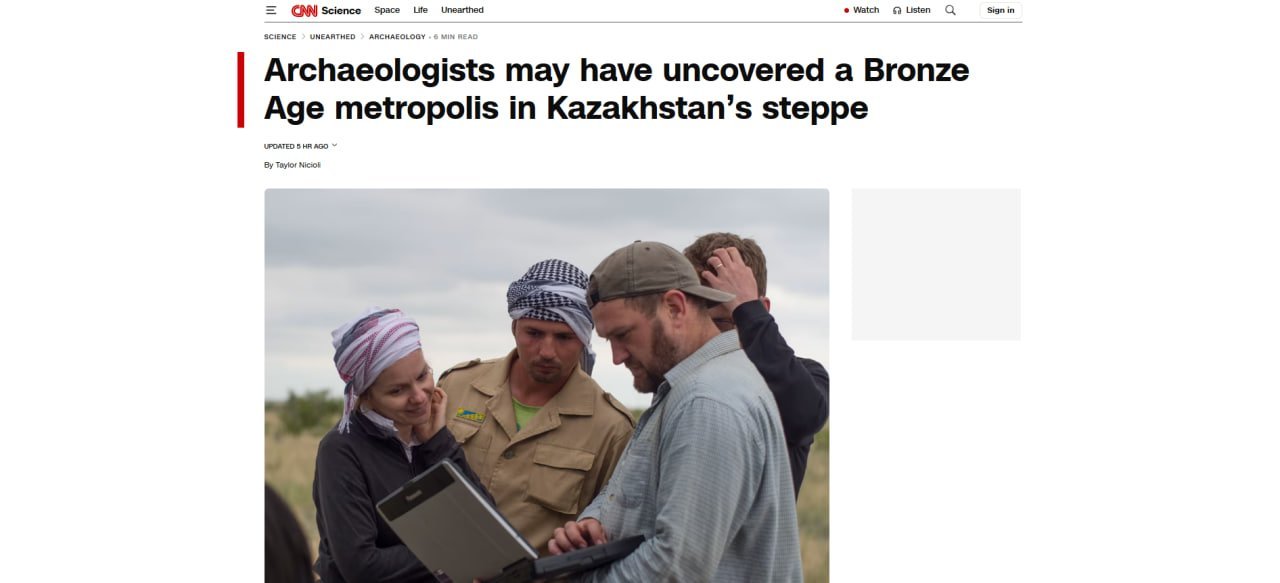Archaeologists Uncover a Large Bronze Age Settlement in East Kazakhstan
 Photo: Elements.envato.com
Photo: Elements.envato.com
Archaeologists have discovered a large Bronze Age settlement in East Kazakhstan — a site that could reshape our understanding of ancient societies in the region, Orda.kz reports.
An international team identified the settlement, which spans roughly 140 hectares. The find quickly drew international attention, with CNN among the first outlets to highlight its significance.
The settlement is located near the Irtysh River valley, in an area known as Semiyarka. Researchers believe it may have been a major center of trade, governance, and metallurgy around 1600 BC.
Semiyarka, nicknamed the “City of Seven Ravines” for its unusual system of intersecting valleys, was first noticed as a potential ancient site in the early 2000s. Full-scale research, however, began only in 2018. Since then, archaeologists from the UK and other countries have uncovered traces of structures and pottery.

At the site, they found fragments of at least 114 ceramic vessels, along with evidence of metalworking — including crucibles, slag, and tools.
According to Miljana Radivojević of University College London, this is only the second known site in the Eurasian steppe with confirmed tin-bronze production. Tin bronze was used to make stronger tools and weapons.
It’s very exciting, because it’s such a rare find to have tin bronze production in this area, Radivojević said.
If Semiyarka does indeed turn out to be a production center, it could upend long-held assumptions about nomadic societies in the area. Until now, scholars believed the steppe was home only to temporary pastoral camps and yurts.
Dan Lawrence, a professor of archaeology at Durham University, says Semiyarka may have served the same functions as an early city — concentrating power, crafts, and logistics.
I think we can say that Semiyarka is a city in the sense that it is very different from surrounding settlements and provides just those kinds of urban services, he noted.
To define the settlement’s boundaries, the research team used Cold War–era aerial images and modern satellite data. They also applied magnetometry — a method that detects underground structures without excavating. This revealed at least fifteen buildings, some resembling houses with internal rooms.
Excavations are ongoing. Researchers hope to determine how many people lived in Semiyarka, how long the settlement existed, and how it was connected to other centers in the region.
This site is super interesting because it just breaks from all the things that we thought we knew about Central Asia up to this point, Lawrence concluded.
Original Author: Ruslan Loginov
Latest news
- Kazakhstan: Blogger Nordkazakh Sentenced to Nearly Four Years in Prison
- Exxon, Carlyle, and ADNOC Line Up for Lukoil’s International Portfolio
- Archaeologists Uncover a Large Bronze Age Settlement in East Kazakhstan
- Armenian Court Prolongs Detention of Tashir Group Founder Samvel Karapetyan
- ALMEX Preps to Sell 4% Stake in Halyk Bank Worth 159 Billion Tenge
- Inside the Algabas Tragedy: What Is Known So Far
- What’s Being Kept from the Commission on the Almaty–Oskemen Road, and Why Billions Are at Risk
- Fourteen-Year-Old Boy Dies After Alleged Assault in Talgar: Family Disputes Investigation
- Kazakhstan Welcomes UN Gaza Peace Plan
- Smog Engulfs Oskemen: Multiple Pollutants Exceed Limits
- Chinese Refinery Drops Russian Oil, Turns to Kazakhstan and UAE
- Zelenskyy Heads to Türkiye for Talks as Kremlin Spokesperson Says Russian Reps Won’t Participate
- Kazakhstan Introduces Fines for Misuse of Artificial Intelligence
- Estonia to Store Kazakh Grain Free for 90 Days Under New Export Deal
- Twelve People, Including Nine Children, Killed in House Fire in Turkistan Region
- No Buyers for Satybaldyuly’s Confiscated Market Asset
- Aigerim Tleuzhanova Taken to Hospital, Lawyer Says
- Atyrau Residents Raise Concerns Over State Program Buildings' Quality
- Kazakhstan Sees Sharp Increase in Foreign Labor
- Reuters: Chevron Weighs Bid for Lukoil’s Foreign Assets

